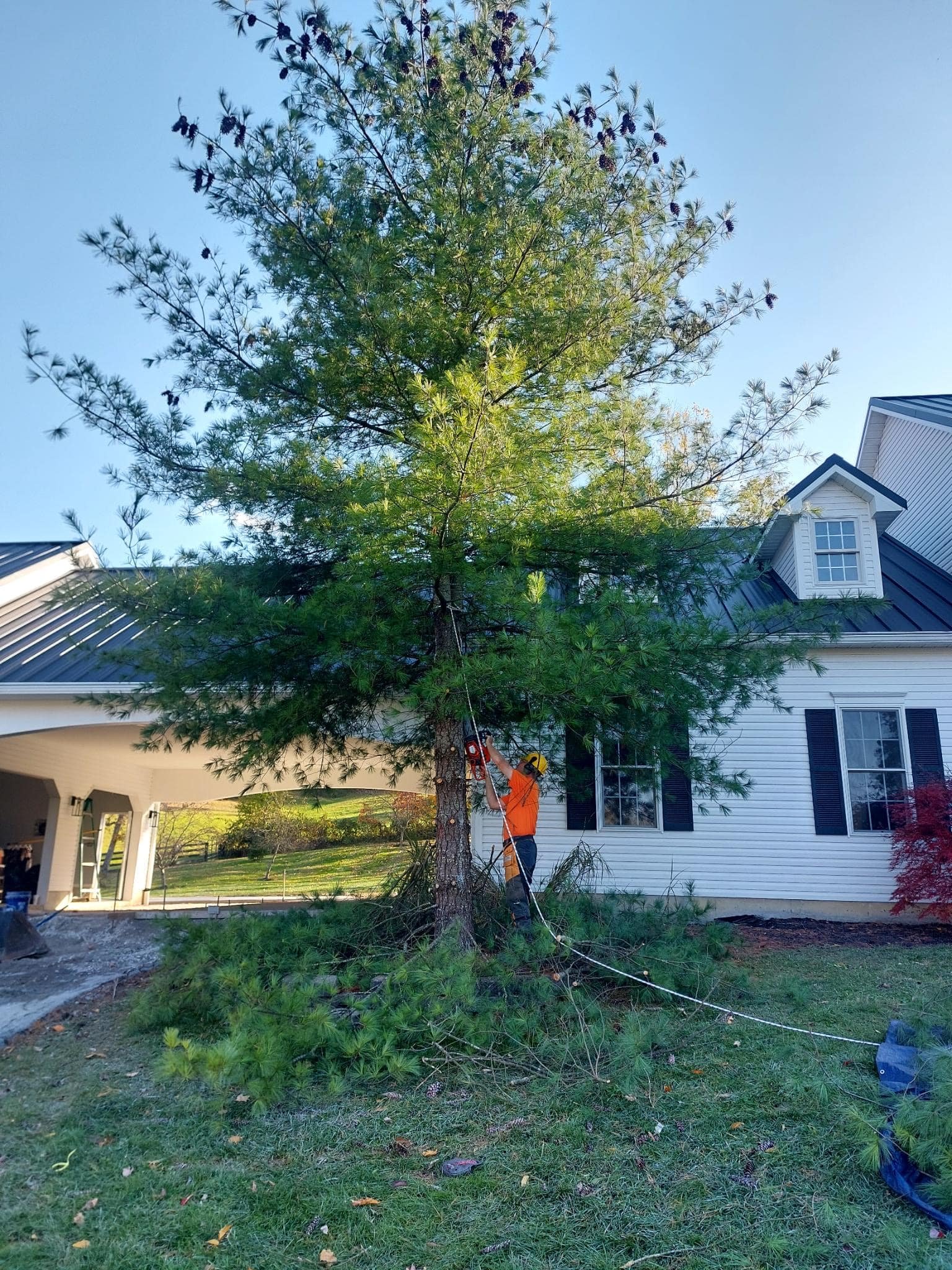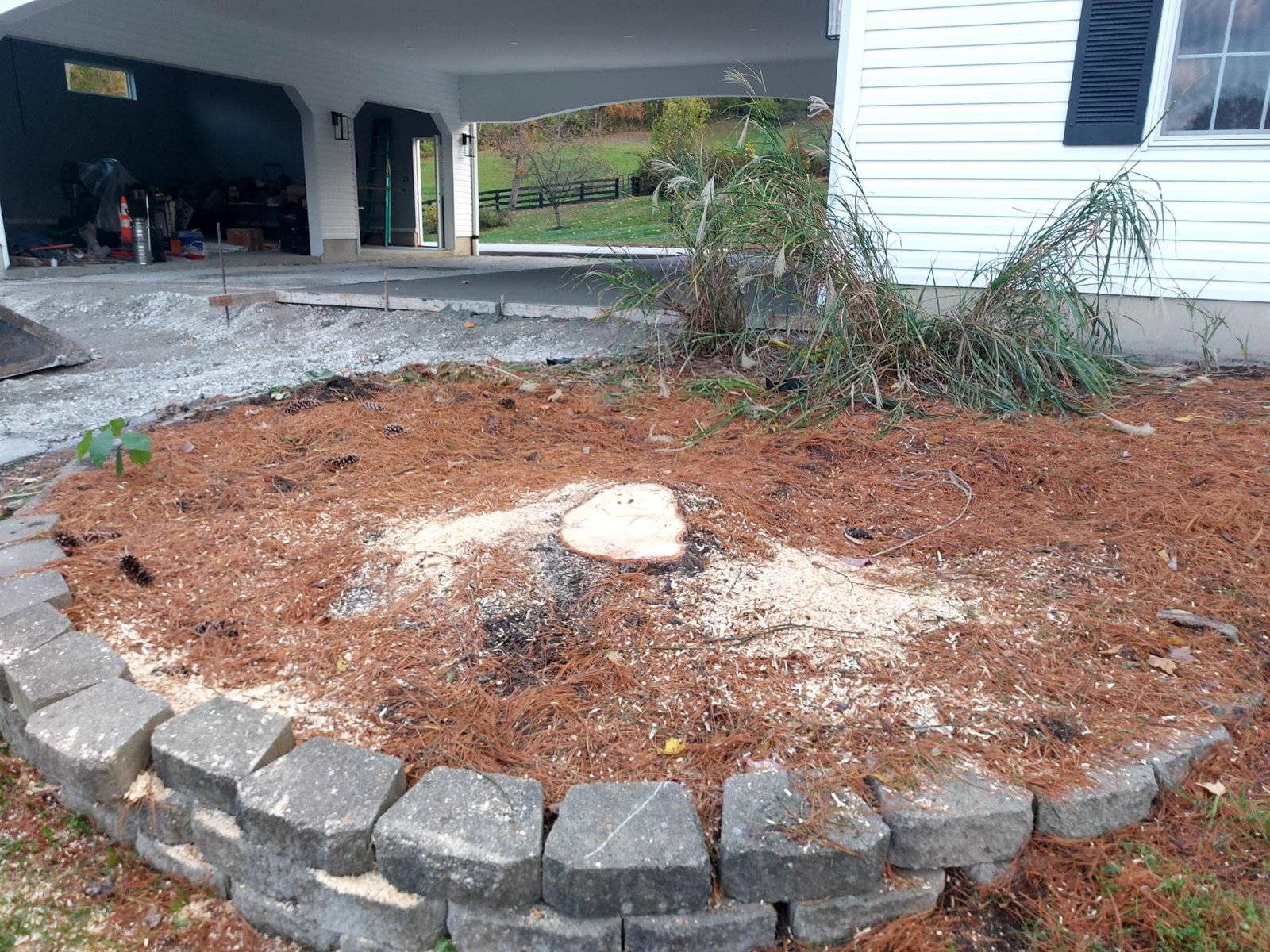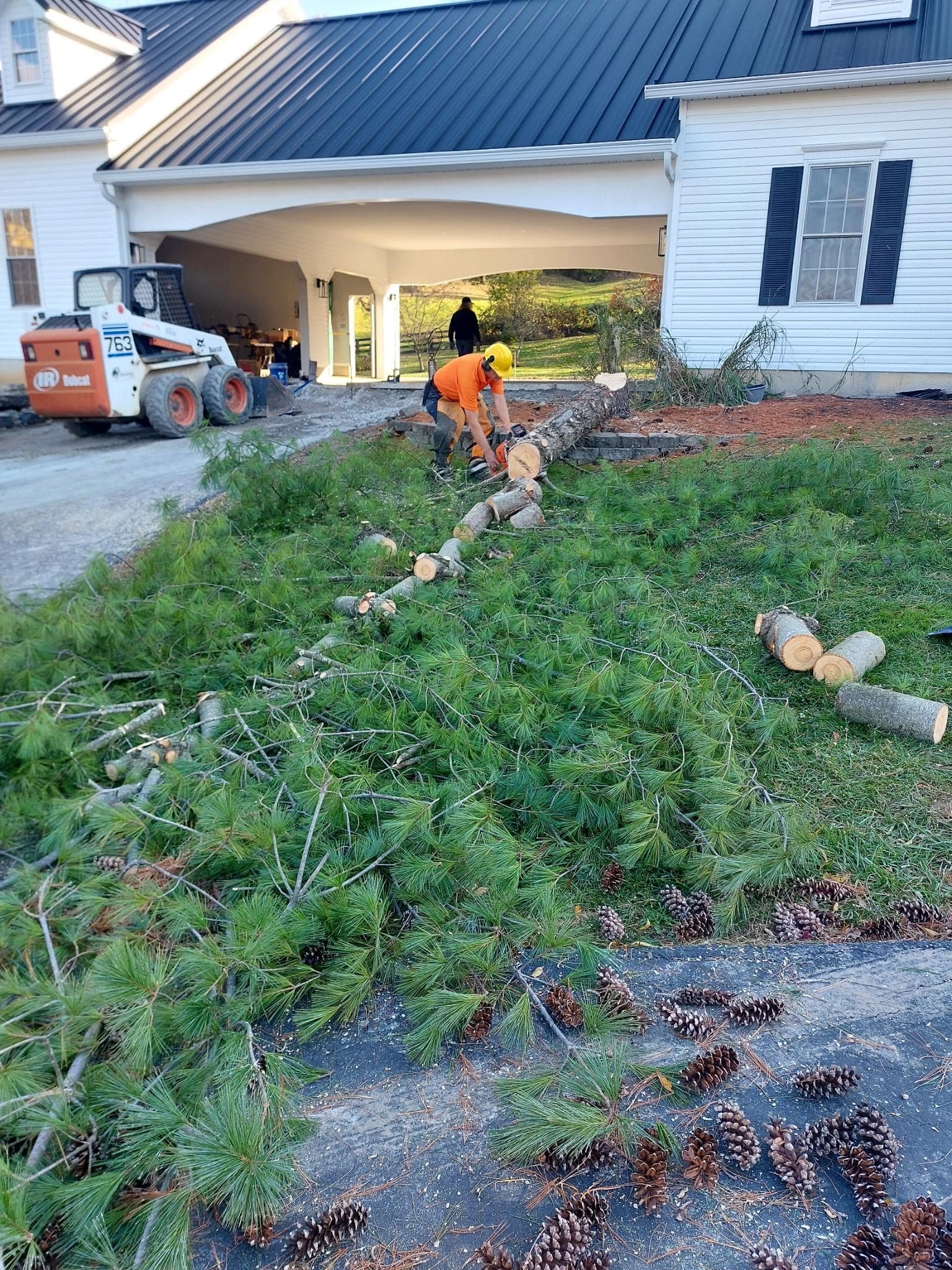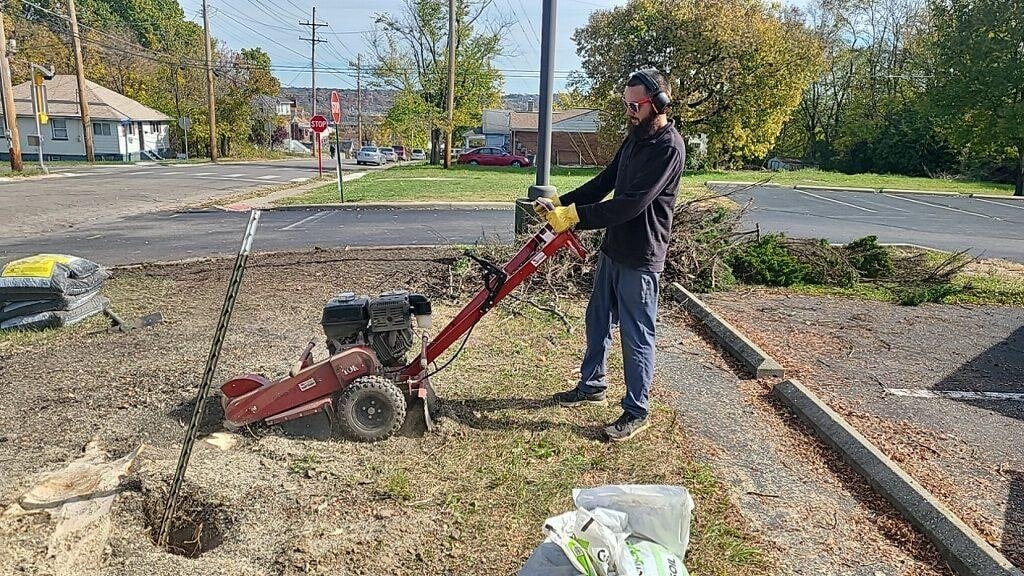Tree Removal
We can chop and drop, haul away, and/or chip onsite.
However, we can remove for any reason.
Review the following as a guide:
Proper Timing for Tree Removal
The ideal time to remove a tree depends on various factors, including the tree’s species, health, and the reason for removal. Here are some general guidelines:
- Late Fall to Early Spring (Dormant Season): This is the preferred time for most tree removals, as trees are dormant and under less stress. The lack of leaves also makes the process safer and easier. Additionally, the risk of disease transmission is lower during the dormant season.
-
- Action: Inspect your trees in late fall or early spring for any signs of disease, damage, or decline.
-
- Avoid Removing Trees During:
-
- Summer: Trees are actively growing and under more stress, making them more susceptible to disease and pests.
- Early Fall: Trees are preparing for winter, and removing them during this period can cause unnecessary stress.
- Late Winter to Early Spring (Bloom Time): For some species, removing trees during bloom time can disrupt pollination and impact nearby trees.
-
Diagnosing Issues and Concerns
Before removing a tree, it’s crucial to diagnose any issues or concerns. Here’s how to identify common problems:
1. Visual Inspection: Look for dead or dying branches, cracks in the trunk, peeling bark, discoloration, or mushrooms growing at the base. Use a pair of binoculars to inspect the crown, and walk around the tree to check the trunk and roots.
2. Branch Tap Test: Gently grab a suspect branch and shake it. If it breaks easily or feels hollow, it may be dead or dying.
3. Soil Moisture Test: Stick a screwdriver into the soil around the tree. If it goes in easily, the tree has sufficient moisture. If it’s difficult to insert, the tree may be under stress from drought.
4. Trunk Circumference Measurement: Measure the trunk circumference about 4.5 feet above the ground. Divide this number by the tree’s height in feet to get the tree’s age. This can help determine if the tree is too young or too old for its intended purpose.
Special Considerations
1. Tree Health: Consult with an arborist or use a tree health assessment tool to determine the tree’s overall health and potential for recovery.
2. Tree Location: Proximity to structures, power lines, and other trees. Trees growing too close to buildings may need to be removed to prevent damage or foundation issues.
3. Tree Species: Some species are more prone to disease or pests than others. Research the species’ common issues and care requirements.
4. Local Regulations: Check local ordinances and obtain any necessary permits before removing a tree.
5. Safety: Always prioritize safety. Hire a certified arborist if the tree is large, dead, or near power lines.




Stump Grinding

Benefits of Stump Grinding and Removing Carbon-Rich Wood Chips
Stump grinding and removing the resulting carbon-rich wood chips offer numerous benefits, primarily related to land management, environmental impact, and safety. Here, we explore these advantages from a holistic, natural health, and self-reliance perspective.
1. Land Management and Reclamation
-
- Site Preparation: Stump grinding is a crucial step in site preparation for new construction, landscaping, or gardening projects. By removing stumps, you create a flat, clear surface for building or planting.
- Soil Health: Grinding stumps into small wood chips allows them to break down more quickly, enriching the soil with organic matter. This improves soil structure, water retention, and nutrient availability, promoting healthier plants and gardens.
- Weed Control: Removing stumps helps prevent the spread of invasive species and weeds, as many plants can spread through root systems.
2. Environmental Impact
-
- Carbon Sequestration: While wood chips are carbon-rich, they can also help sequester carbon when incorporated into the soil. As the wood chips break down, they release carbon into the soil, where it can be stored for centuries.
- Wildlife Habitat: Leaving wood chips on-site can provide habitat and food sources for local wildlife, supporting biodiversity.
- Mulching: Using wood chips as mulch around plants can help regulate soil temperature, retain moisture, and suppress weeds, promoting a healthier ecosystem.
3. Safety and Aesthetics
-
- Trip Hazards: Removing stumps eliminates trip and fall hazards, improving the safety of your property, especially for children and the elderly.
- Pest Control: Stumps can attract pests like termites, ants, and rodents. Removing them helps reduce pest infestations and the potential damage they cause.
- Aesthetics: Stump removal improves the overall appearance of your property, enhancing curb appeal and making outdoor spaces more inviting.
4. Alternative Uses for Carbon-Rich Wood Chips
-
- Composting: Incorporating wood chips into a compost pile can help maintain proper carbon-to-nitrogen ratios, promoting efficient decomposition and creating nutrient-rich fertilizer.
- Mushroom Cultivation: Wood chips are an excellent substrate for growing gourmet and medicinal mushrooms, providing a sustainable source of food and natural medicine.
- Biochar: Pyrolyzing wood chips to create biochar can sequester carbon, improve soil health, and provide a sustainable, renewable energy source.
